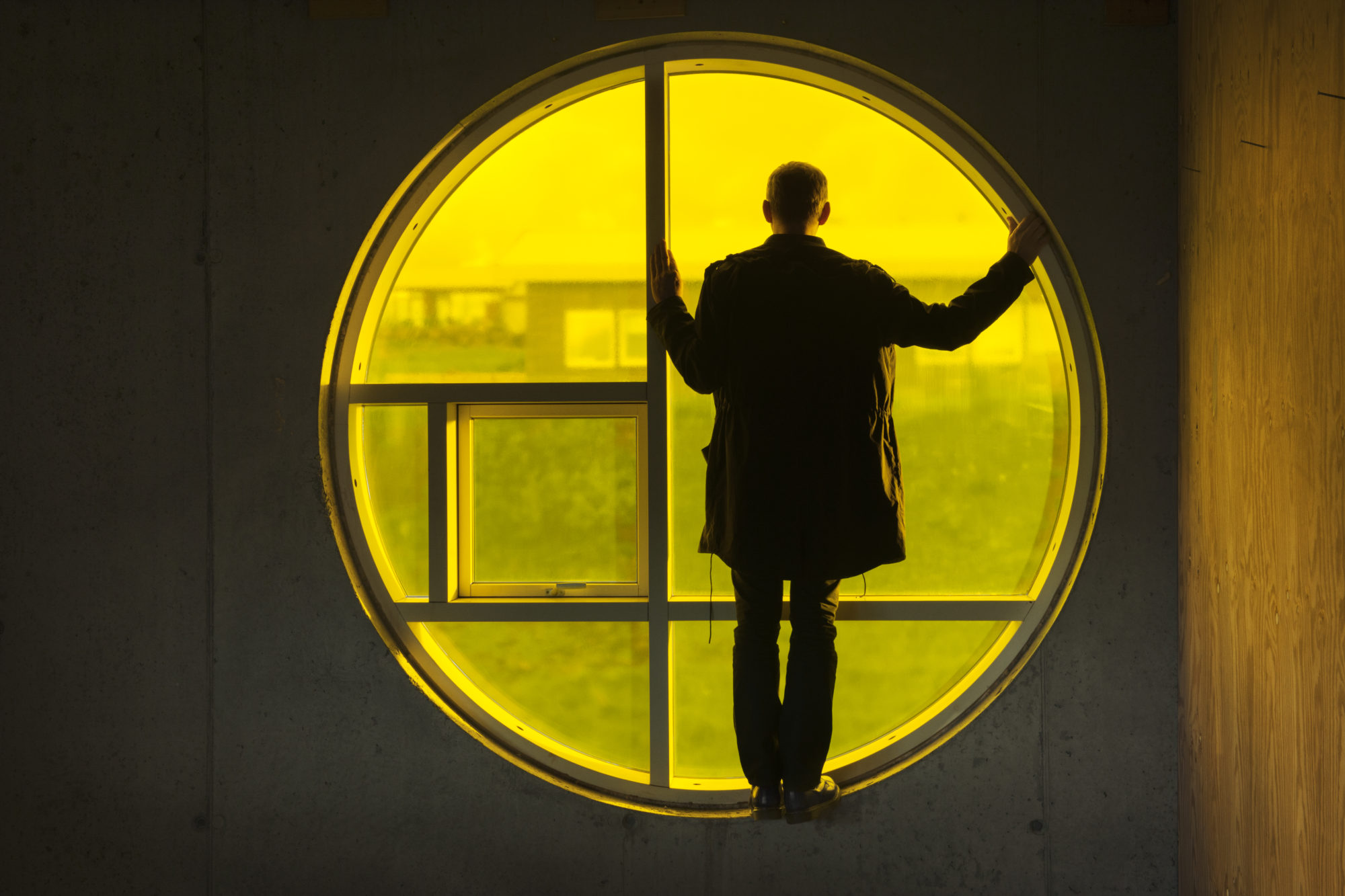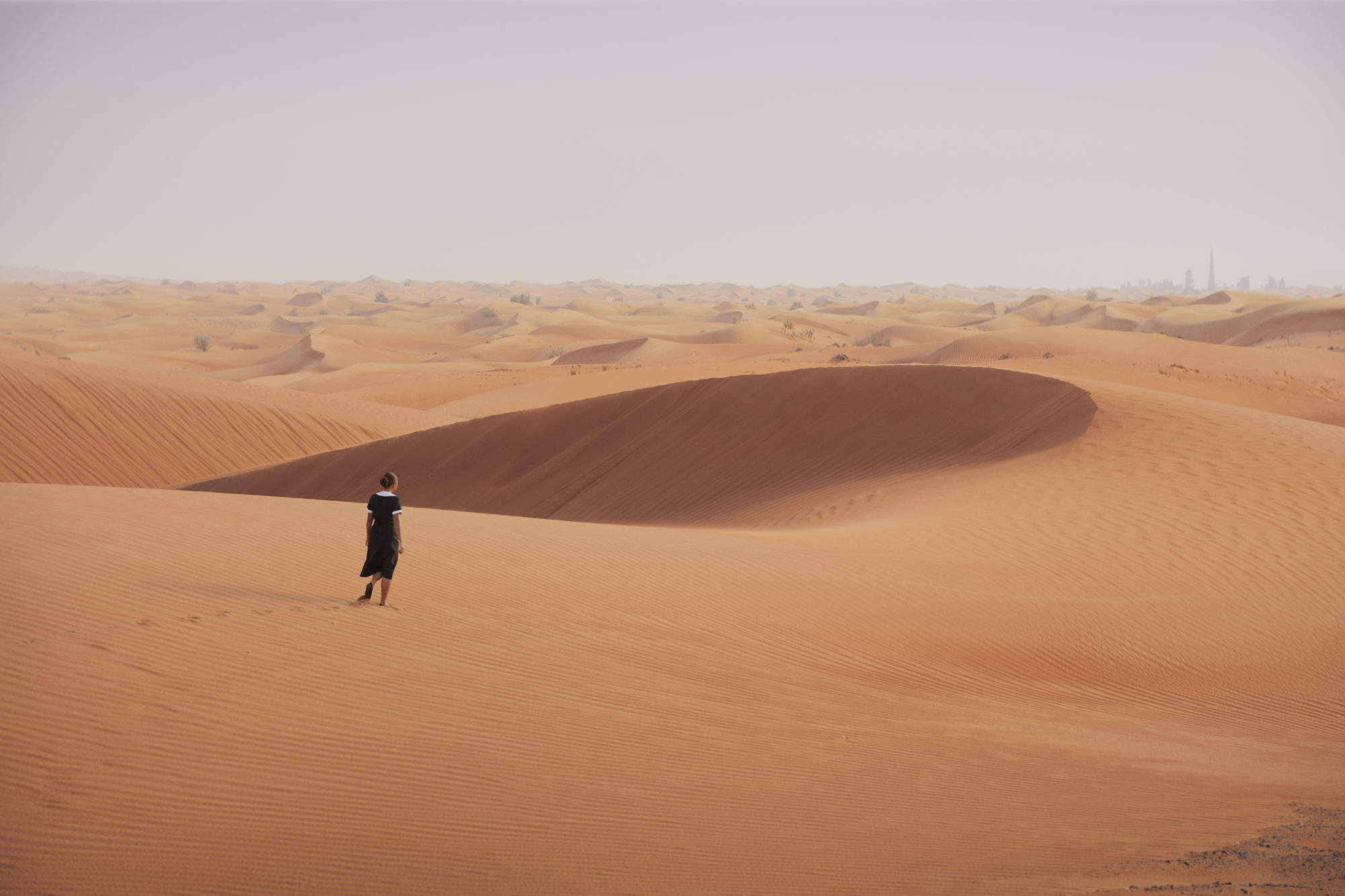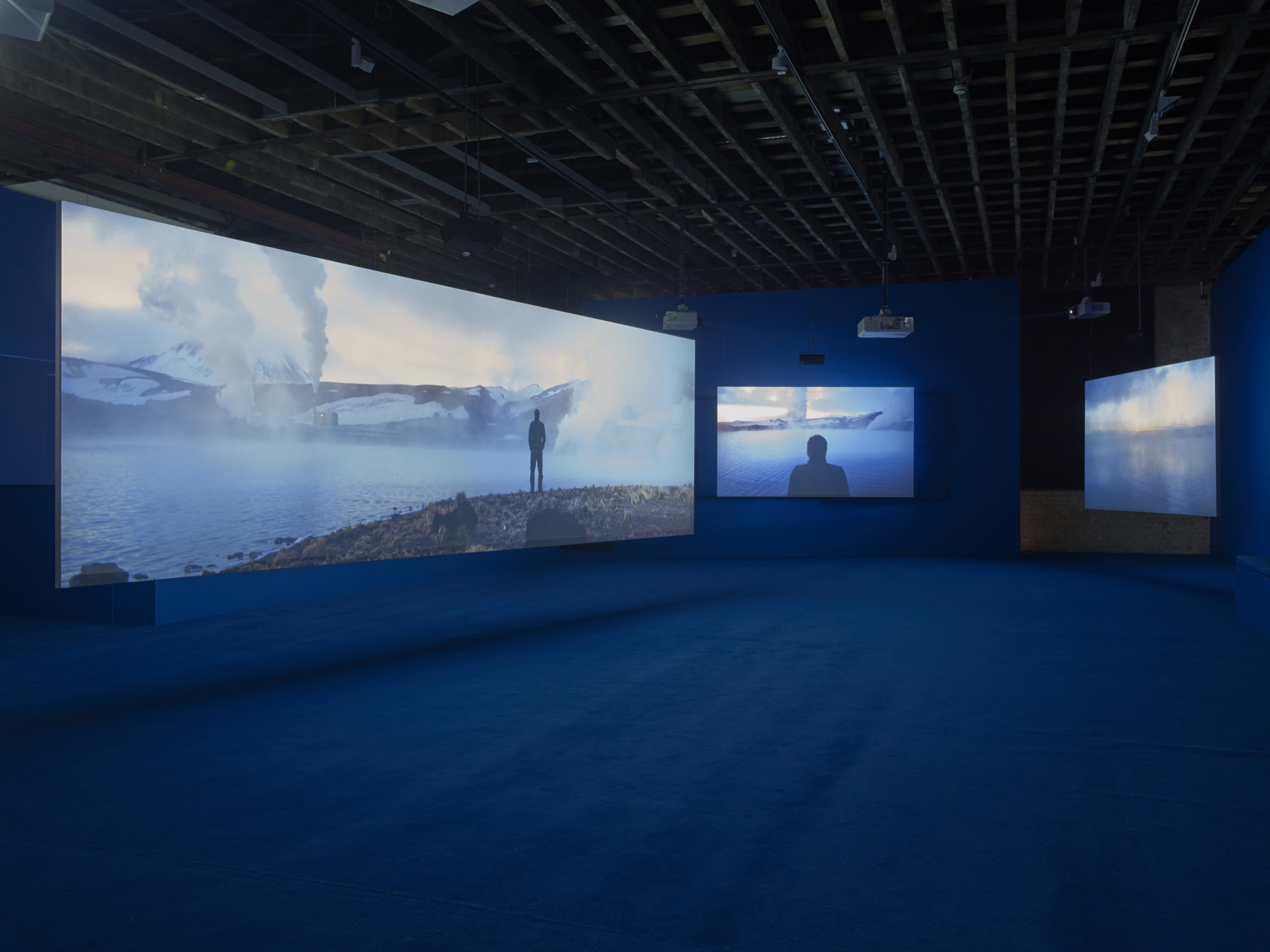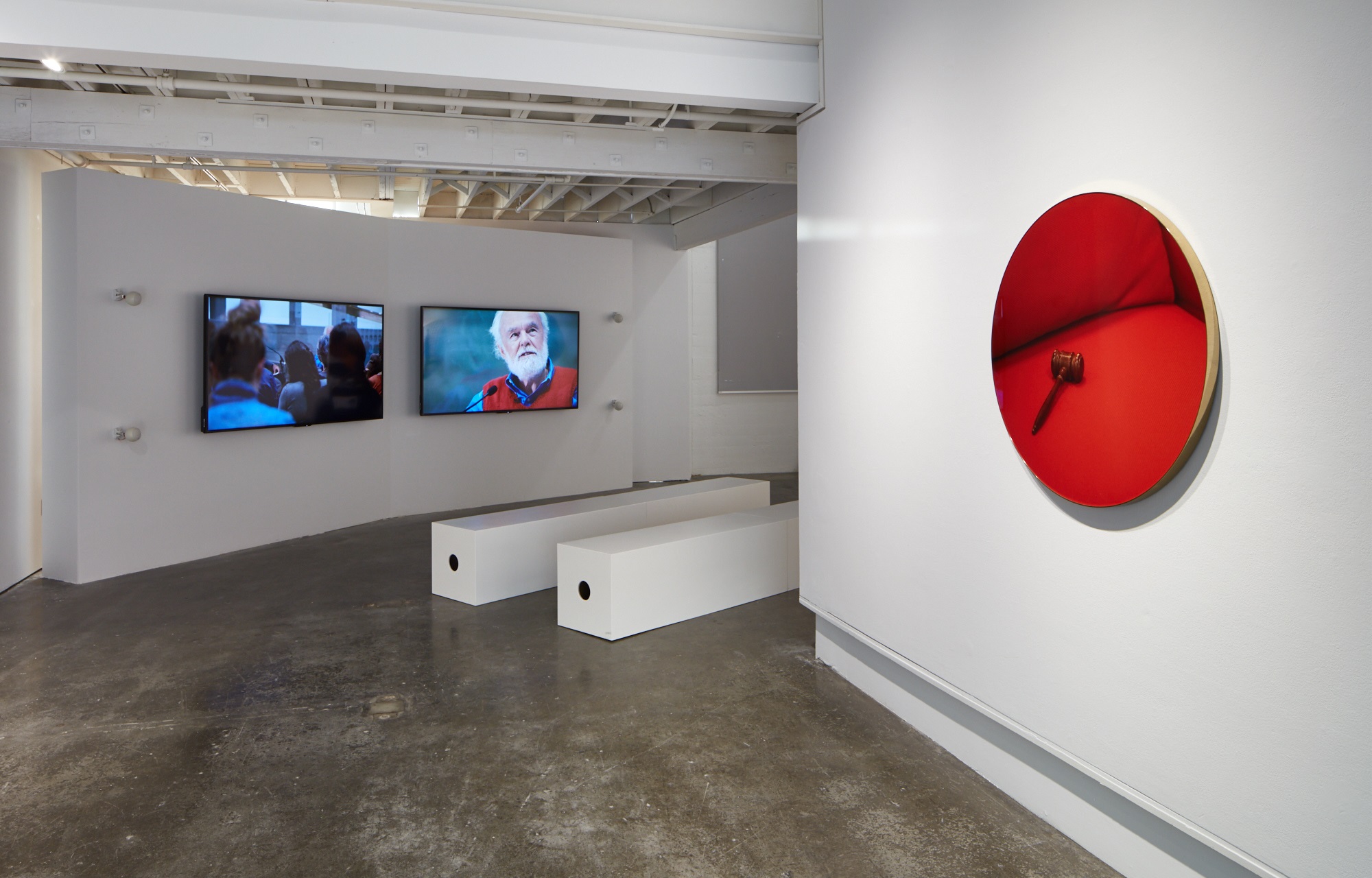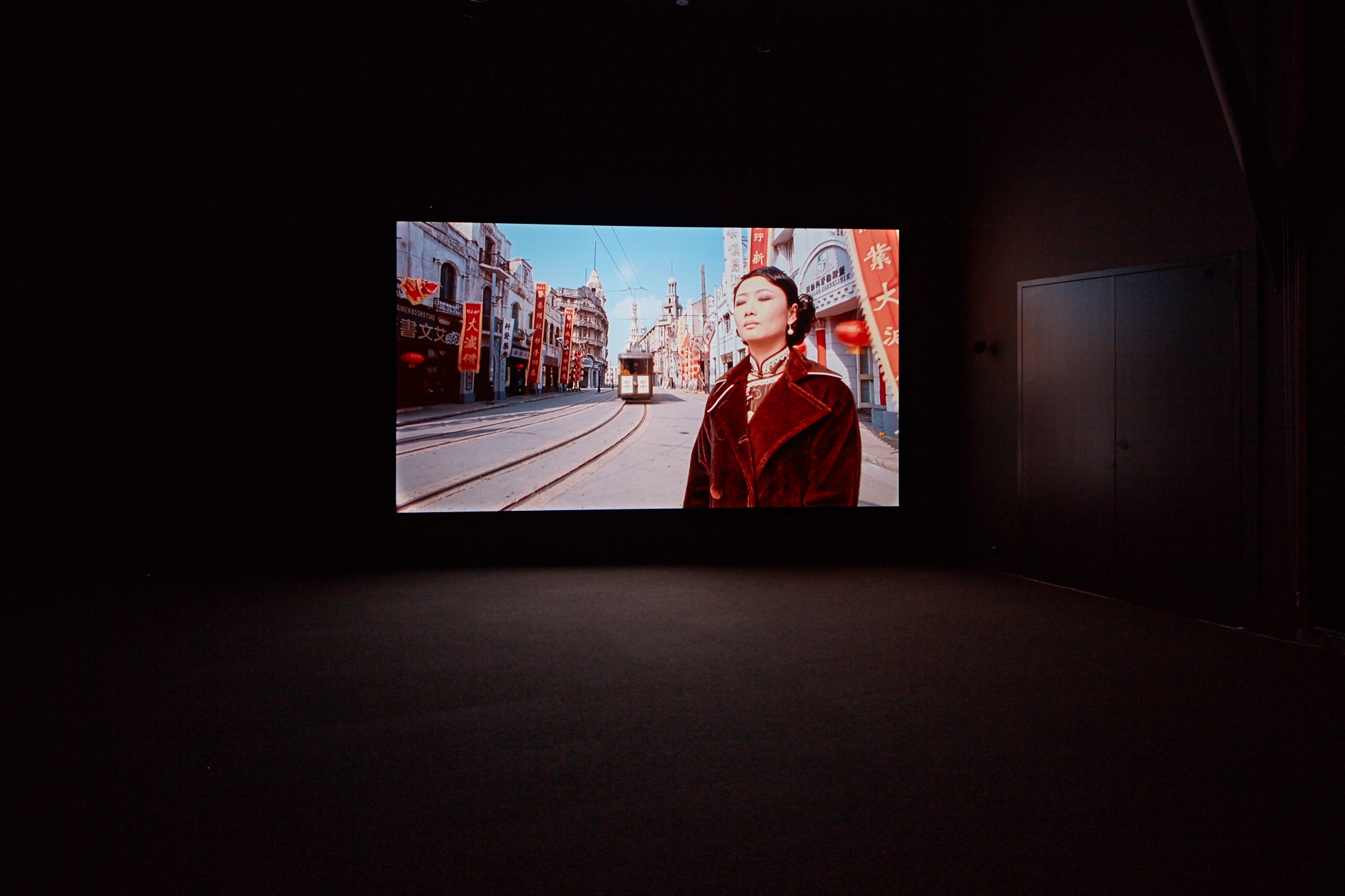Isaac Julien, PLAYTIME, 2014, installation detail, seven screen ultra high definition video installation with 7.1 surround sound [courtesy of the artist]
Isaac Julien: Playtime
Share:
Isaac Julien’s sumptuous three-part film installation at Fort Mason Center for Arts & Culture in San Francisco invoked manifold puns and linguistic associations in its representations of capitalism. Through glossy, large-format movie remakes and reimaginings, for example, Julien intentionally created structurally derivative work to reference financial derivatives and work of exaggerated physical scale as a symbol for upscale lifestyles and conspicuous consumption.
As clever and self-aware as Julien has ever been, Playtime (December 1, 2017–February 11, 2018) presented a study of what we now call “late capitalism” as highly produced content displayed on massive screens in an immersive installation format. Julien has been making multiscreen works since the 1990s; this recent project suggests an evolution toward work that is both more cynical and more market-friendly than his past achievements in gallery and experimental cinema contexts.
In the show’s titular installation, Playtime (2014), a loose adaptation of Jacques Tati’s 1967 French comedy of the same name, seven screens of multiplex-size were angled throughout the gallery space such that it was impossible to see them all at once. The original film is famous for its gargantuan set, depicting a cold, futuristic Paris cityscape; Julien’s vision sprawls out further, as though in orders of magnitude, through Dubai, Reykjavik, and London, suggesting that these global cities are just as fabricated as Tati’s backdrop.
Playtime follows flows of capital specifically across these three geographies, all central to the 2008 global economic crisis. The cast of characters—all of whom seem, in varying ways and degrees, to be playing themselves—includes a Filipina housekeeper (pictured, in the extreme built environment of Dubai, cleaning a condo full of expensive-looking art or wandering uninhabited sand dunes that may as well be on the moon); the real-life London-based auctioneer Simon de Pury, playing a charmingly alienated version of himself; an Icelandic artist wandering through an unfinished modernist dream home; and a crass, smarmy art huckster, portrayed by a perfectly cast James Franco in cameo. Unlike Tati’s characters, Julien’s never encounter one another. Instead they exist in their own closed-off environments, whether a desert in the United Arab Emirates or a lava field in Iceland.
Interviewing de Pury at claustrophobically close angles in Playtime is actress Maggie Cheung, who also stars in Julien’s Better Life (Ten Thousand Waves) (2010), the other major film of the exhibition. Whereas Playtime was a surface of image (and labor, in opposition to the title of the film) spread across multiple screens, Better Life was presented in a single black box, scaled to the size of the human body. The body is also the subject of the work, to the extent that the film explores the human lives sacrificed to the implacable demands of capitalism. In 2004, almost two dozen Chinese laborers picking mollusks off the Northwest coast of England died after being trapped on sandbanks by a rapidly moving tide. Julien’s interpretation of the tragedy includes documentary-drama-style re-enactments interspersed with another remake: his own reprise of the 1934 Chinese silent film The Goddess, a melodramatic story of a financially desperate woman trying to create a better life for her son.
Julien’s reinterpretation is by turns both more cosmic than the original Goddess—introducing the protagonist explicitly as the ancient goddess Mazu, the protector of sailors—and more metatheatrical, showing her against a visible green screen as well as in the world of the film itself. The production equipment for Better Life is often made intentionally visible, as though to present an opposite approach to close-up magic, to reveal the unnatural nature of the film—a direct rejoinder to the notion that capitalism is somehow predetermined and inevitable. At the same time, the explicit parallel drawn between these two instances of laboring and trafficked bodies is deeply attuned to the real, material entailments of globalization.
If there is such a thing as metacapitalism, contemporary art participating in the high-end international market provides a complicated medium for its deployment. One criticism that might be made of these two films: they sublimate into beautiful and very consumable art experiences, appealing to a market that is increasingly hungry for artistic product of such scale, even as global economic inequality continues to grow exponentially—the very imbalance the work criticizes. The art world does seem to thrive on condemnations of its own hypocrisies.
This question of the contradiction between message and form hovers over Playtime and Better Life, and productively so. Julien, to his credit, leaves room for aesthetic and ethical ambiguity while challenging our very consumption of the works, which do the work of showing what Timothy Morton has called the “hyperobject” of capitalism—a structure so big that any comprehensive view would be impossible. Julien’s doubling of depiction and presentation, and the circulation imposed on his audience’s bodies, make contemporary culture’s lack of a fixed point of focus bleakly and abundantly clear.
Better Life clocks in at just under an hour, and Playtime at about ten minutes longer; the third film of the exhibition, KAPITAL (2013), is closer to half an hour. Created just before Playtime, KAPITAL largely operates as preparatory research for the former—and, as a public conversation between Julien and the Marxist geographer David Harvey shows, what a more didactic version of the latter might have looked like. The two-channel video performs like a telescreen of a university lecture, even when broken up by montages of historical images. Most of the video is devoted to Harvey’s lectures on capitalism, with Julien interspersing his own comments.
The difference between the more donnish approach in KAPITAL and Julien’s desire, stated within the work itself, to film the “shadow” of capitalism casts the other two films in a different light. As slick and “produced”—and perhaps as complicit in the operations of the art market—as the works are, they have the grace to float in the shadows of the real and fictive rather than the false clarity of the theoretical.
